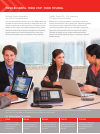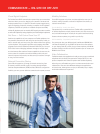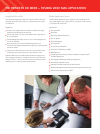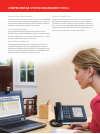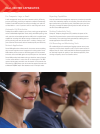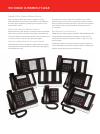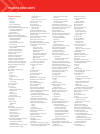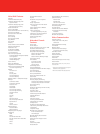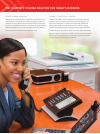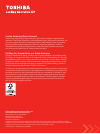
Voice Mail Features
Audiotex
Automated Attendant (AA)
Automatic Message Copy with
Optional Delete
Automatic Message Copy with
Start/Stop Time and Delay
Called Identifi cation
Caller ID with SMDI
Caller Confi rmation Prior to Transferring
Call Record to Mailbox
Call Record Over Strata Net
Call Queuing
Call Screening
Class of Service (COS)
Copy Mailbox
Copy Range
Directory
Direct Transfer to Voice Mailbox
Disk Space Notifi cation
Distribution Lists
Do Not Disturb (DND)
Extensions—Scheduled
Fax Tone Detection
Feature Groups (optional)
Automatic Speech Recognition (ASR)*
Fax Integration*
Text-To-Speech (TTS)*
Unifi ed Messaging*
Future Delivery
Guest User Mailboxes
Independent Port Greetings
Interactive Voice Response (IVR)
via Token Programming
Mailbox
Function Lock
Groups
Security Code
Personal Greetings
Time Zone Setting
Mailbox Number – Varied/Fixed Length
Message
Continuous Delete
Continuous Playback
Date and Time
Forwarding
Notifi cation
Pause During Playback
Pause During Recording
Playback Control
Private
Purging
Reply
Retrieval Control
Return Receipt Verifi cation
Speed Control
Urgent
Volume Control
Message Storage
Personal Folders
Message Queues
Multiple System Languages
Networking
AMIS
VPIM
Centralized Voice Mail
Soft Key Control Over Strata Net
Paging
Offi ce
Relay
Remote Administration
Reports
Shutdown using the Telephone
Dial Pad
Single-Digit Menus
Soft Key Control with LCD Feature
Prompting*
System Administrator’s Mailbox
System Backup
Token Programming
(custom applications, IVR, etc.)
Toshiba Plug and Play Integration
User Tutorial (New User)
Varied Sampling Rates
Voice Forms
Attendant Console
Features
Alarm Reset
Answer Button
Answer Prompting by CO Line or DNIS
Attendant Conference Setup
Day/Night Mode Switching
Busy Lamp Field (BLF) Display
Station Directory Number
Station User Name
Station Advisory Message Display
Call Answer Priority
Call Statistics
Incoming and Total
Export to Excel File
Print by Range
Call Waiting Count
Caller ID/ANI Display
Calling/Called Number and Name Display
Color CRT Display
Dial “O” For Attendant
Dial by Name/Number
Dialing an Outside Number for
Station User
Direct Station Selection
Directory Display and Dialing
Directory Entry Attribute Information
Directory Entry Contact Information
Door Phone Calling
Door Unlock
DTMF Tone Signaling from Dial Pad Key
Emergency Call
Emergency Page
Feature On-Line Help
Flexible Programmable Buttons
Headset Operation*
Hold Calls
Hold Timer Display
Incoming Call Identifi cation
Interposition Call Transfer
Join/Split Calls
Keyboard or Mouse Operation
Load Sharing of Multiple Attendants
Loop Buttons
Loop Hold Display
Message Entry and Display
E-mail to Station User
Print Messages
Message Waiting Set and Cancel
Multi-Tasking
Notes Entry and Display for Calls
Overfl ow
Override
Position Busy Mode
Release Button
Remote Operator (IP connection)
Speed Dial Calling
Internal Calls
External Calls
Dial From Caller ID List
Supervised Loop Operation
Three-Way Calling
Through Dialing
Transfer Direct to Voice Mailbox
Trunk Group Control and Busy
Indication
Trunk Test and Verify
Windows PC Operation
Video Communication
Solution Features
3-Way Video with 3-Way Voice
Conference
Desktop/Application Sharing
File Transfer
Message Board
Select Default Video Settings
(on/off and automatic start)
Self Video Preview
Station Hunting
Video Conferencing
Video Forward
Video Hold
Video Park/Pickup (local node only)
Video Transfer
Note: Optional features may or may not be
extra cost items.
* Some feature implementation may require
additional auxiliary equipment.
** SIP trunks available with selected carriers.




